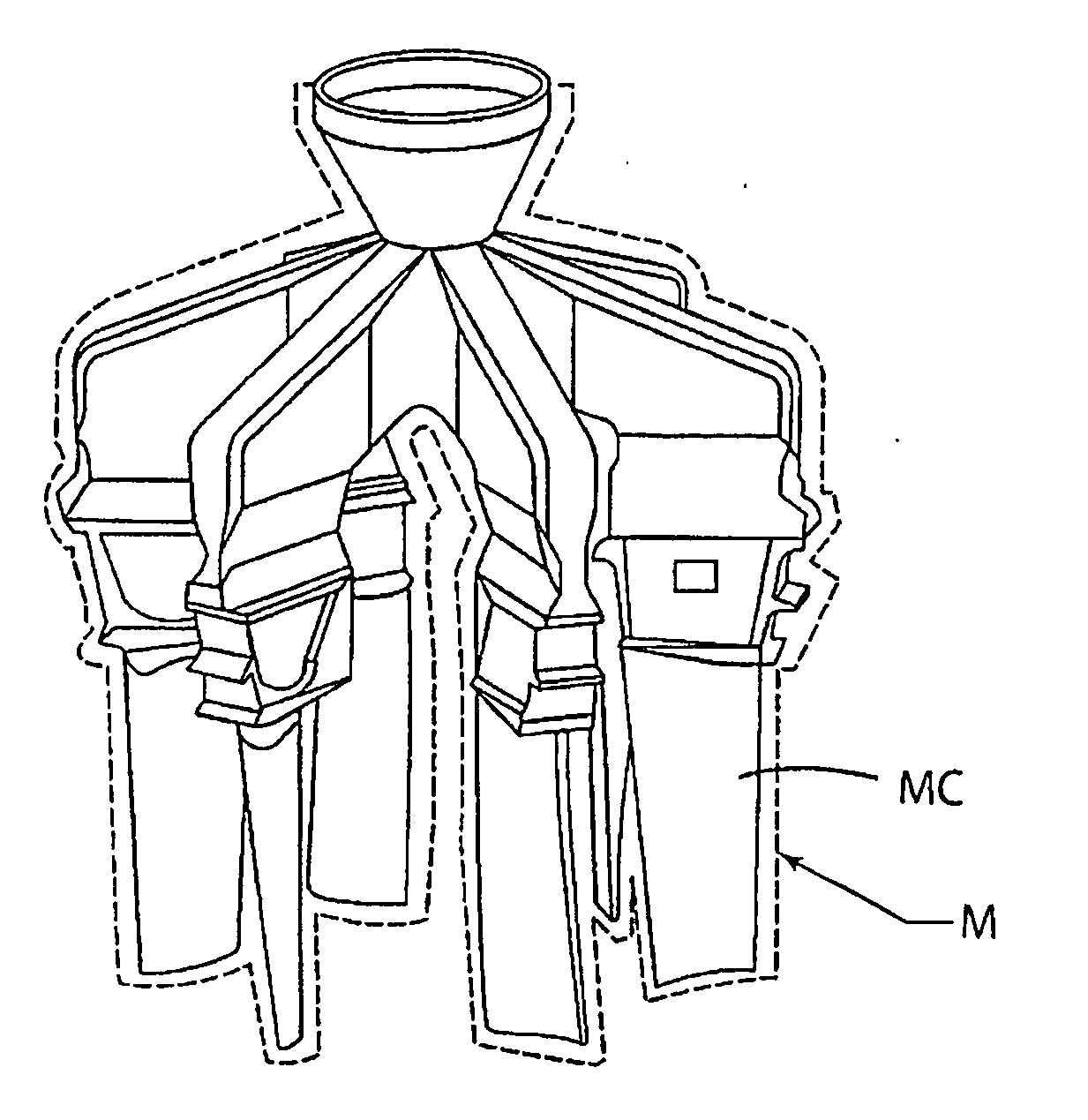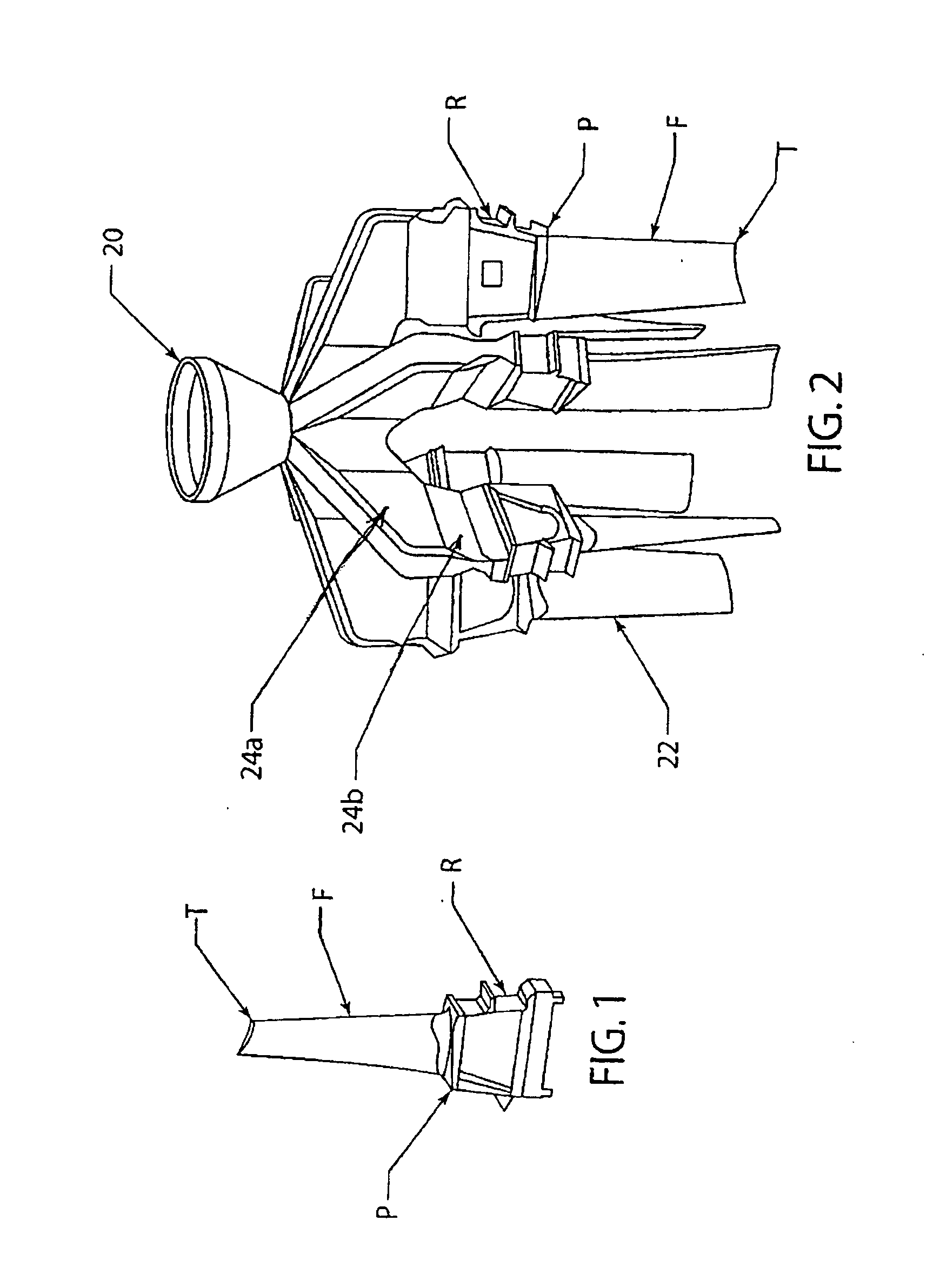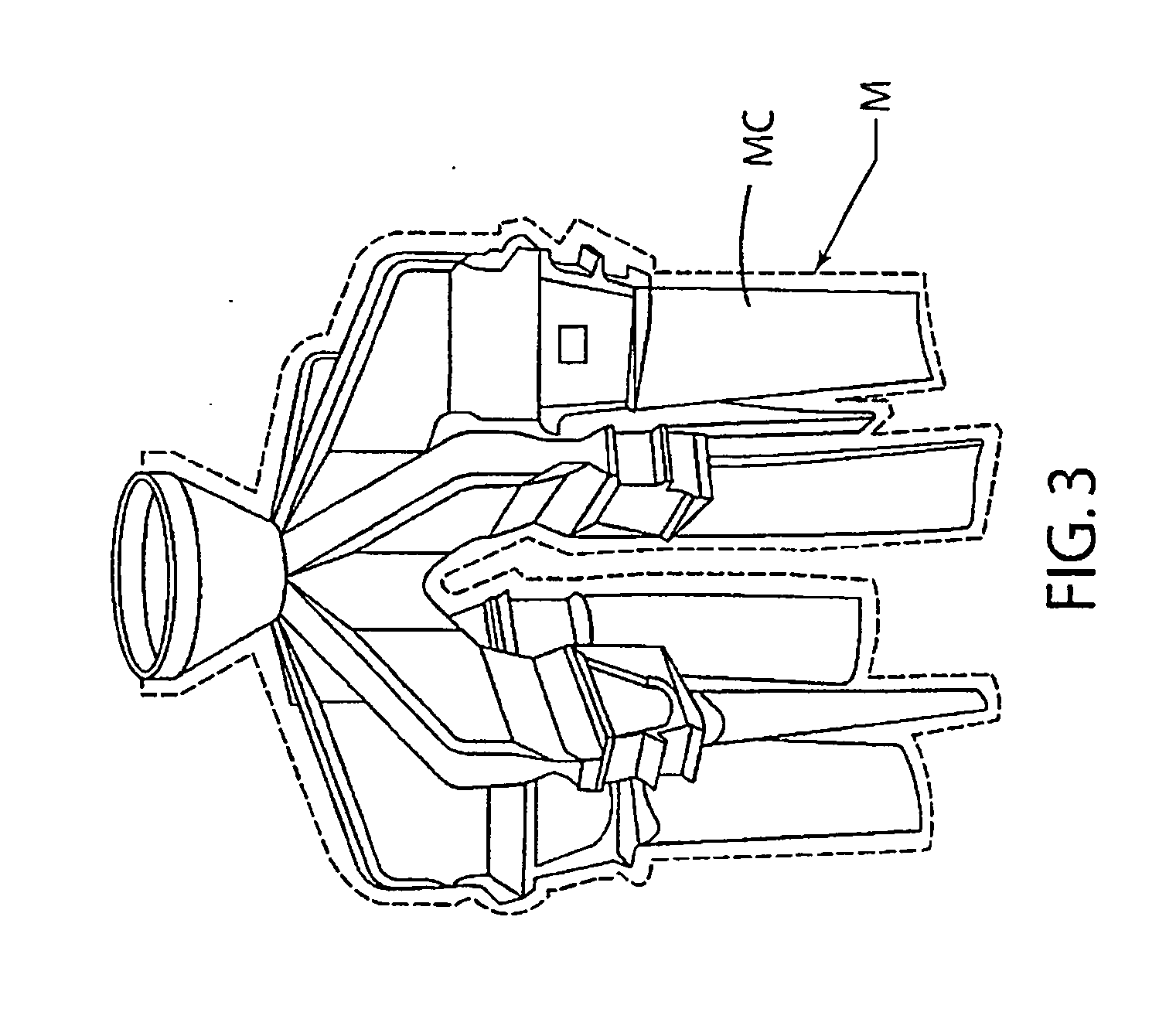Casting method, apparatus, and product
a casting method and casting technology, applied in the field of casting of articles, can solve the problems of high welding and rework cost of castings produced by conventional processes, low metal efficiency, and high manufacturing cost, and achieve the effects of reducing thermal expansion, facilitating heat extraction, and increasing thermal conductivity
- Summary
- Abstract
- Description
- Claims
- Application Information
AI Technical Summary
Benefits of technology
Problems solved by technology
Method used
Image
Examples
example 1
[0067]An industrial gas turbine engine bucket shown in FIG. 14 was made pursuant to an embodiment of the invention with a progressively solidified, equiaxed grain microstructure.
[0068]A casting apparatus similar to that of FIG. 4 was employed using a single shell mold of the type shown in FIG. 4A and using active cooling gas zone Z1 with fog type cooling gas discharge nozzles (5° inclination and 2 inches nozzle-to-mold average distance) and lower active cooling zone Z2 with fan type cooling gas discharge nozzles (5° inclination and 3 inches nozzle-to-mold average distance). The shell mold wall comprised twelve total layers to render it thermally conductive with the inner mold layers comprising a variety of layers of zircon and alumina dips (or zirconia, zircon, or mullite dips) with alumina or zircon stucco applied on the dips and the outer layers comprising silica dips with zircon or alumina stucco on the dips. Cooling gas zones Z1 and Z2 were located a respective distance of one i...
example 2
[0072]This example is offered to illustrate production of a cast article (simulated turbine blade) pursuant to an embodiment of the invention having a dual microstructure comprising a directionally solidified (e.g. single crystal or columnar grain) airfoil region F and an equiaxed grain root region R as illustrated in FIG. 15.
[0073]The nickel base superalloy article was cast with different casting parameters for the columnar grain or single crystal airfoil region F and the equiaxed grain root region R of the simulated turbine blade. The equiaxed grain root region had a variable cross-section, such as a typical fir-tree slotted root. A ceramic shell mold having a mold cavity corresponding to the shape of the simulated turbine of FIG. 15 was cast with an open tip end of the airfoil region residing on a chill plate (like chill plate 61 of FIG. 4). A pigtail single crystal selector was embodied in the open tip end so to select a single crystal for propagation through the airfoil region ...
PUM
| Property | Measurement | Unit |
|---|---|---|
| porosity | aaaaa | aaaaa |
| distance | aaaaa | aaaaa |
| distance | aaaaa | aaaaa |
Abstract
Description
Claims
Application Information
 Login to View More
Login to View More - R&D
- Intellectual Property
- Life Sciences
- Materials
- Tech Scout
- Unparalleled Data Quality
- Higher Quality Content
- 60% Fewer Hallucinations
Browse by: Latest US Patents, China's latest patents, Technical Efficacy Thesaurus, Application Domain, Technology Topic, Popular Technical Reports.
© 2025 PatSnap. All rights reserved.Legal|Privacy policy|Modern Slavery Act Transparency Statement|Sitemap|About US| Contact US: help@patsnap.com



